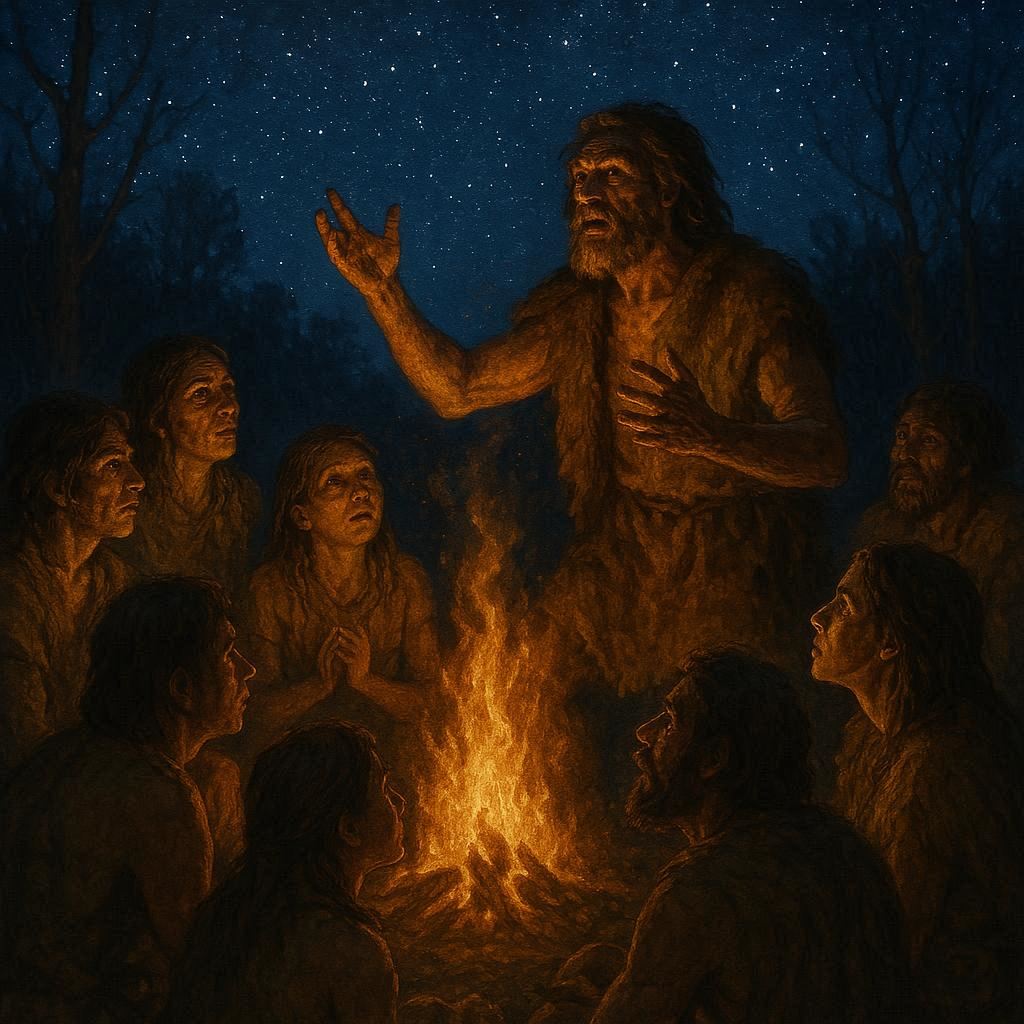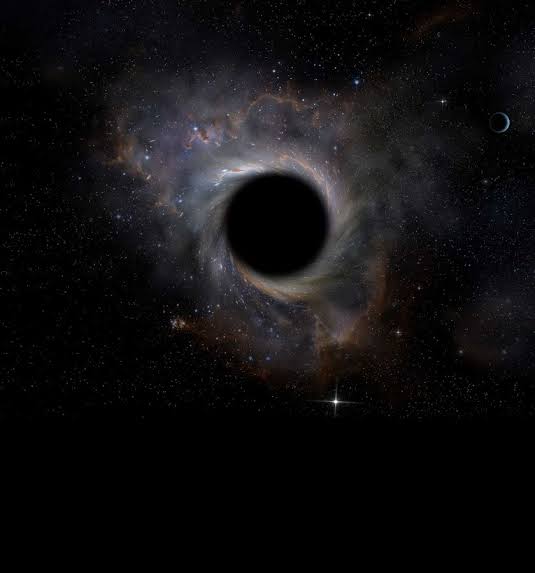Imagine the Earth thousands of years ago. Vast grasslands stretched across continents, forests hummed with animal calls, and rivers wound their way through landscapes untouched by cities. In this world, early humans lived side by side with predators, armed with little more than stone tools and fire. Yet they carried something no other creature possessed: the seed of a voice. Somewhere in the deep history of our species, the silence of the world was broken by words. A cry of warning became a sentence, a gesture became a story, and language was born.
The evolution of language is one of the most fascinating mysteries of humanity. It is not merely about how we learned to produce sounds—it is the story of how our ancestors transformed noise into meaning, how abstract thought found a home in spoken words, and how the ability to speak reshaped the destiny of our species.
Defining Language
Language is more than communication. Animals communicate, from the songs of birds to the dances of bees. What sets human language apart is its complexity, flexibility, and symbolic power. Language allows us to speak of things not present, to describe the past and imagine the future, to invent concepts that exist only in the mind. With language, we do not just share information—we share worlds of meaning.
At its core, language is a system of symbols governed by rules. Words are arbitrary sounds, yet together they form structures capable of infinite expression. The word “tree” does not resemble an actual tree, but all who speak English know what it means. Through shared agreement, sounds become symbols, and symbols build civilizations.
The Mystery of Origins
When and how did language begin? Unlike bones or tools, words leave no fossils. Linguists, anthropologists, and evolutionary biologists can only piece together clues from anatomy, genetics, and the behavior of our closest relatives, such as chimpanzees and bonobos. The origins of language are obscured in deep time, yet theories abound.
One view is that language evolved gradually, emerging from earlier forms of communication such as gestures, facial expressions, and vocal calls. Another theory proposes a sudden leap, a genetic mutation that rewired the human brain to support symbolic thought. While the exact pathway remains debated, most researchers agree that language arose at least 50,000 to 100,000 years ago, likely earlier, coinciding with the appearance of art, ritual, and complex tools.
The Role of the Brain
Human language is possible because of our uniquely structured brains. Specific regions, such as Broca’s area and Wernicke’s area, play key roles in speech production and comprehension. These areas are connected by neural pathways that allow us to transform thought into sound and sound into thought.
But the brain alone is not enough. Many animals have large brains, yet none speak as we do. What makes humans special is not only brain size but brain connectivity—the intricate networks that link regions of memory, reasoning, and motor control. This integration allows language to be more than imitation. It becomes creativity, enabling us to invent words, metaphors, and stories.
The Voice and the Body
Language is as much physical as it is mental. The human vocal tract is uniquely adapted for speech. Compared to other primates, we have a descended larynx, a flexible tongue, and finely tuned control over breathing. These anatomical features allow us to produce a vast range of sounds, from whispers to shouts, from vowels to consonants.
Yet this adaptation came at a cost. A lower larynx increases the risk of choking—a dangerous trade-off in evolutionary terms. That such a risk persisted suggests that the benefits of speech far outweighed the dangers. Language gave humans a tool so powerful that it shaped survival itself.
From Gesture to Voice
Some scientists argue that language began not with voice, but with gesture. Early humans may have used hand signals, facial expressions, and body movements to communicate before vocal speech became dominant. Evidence for this theory lies in the fact that modern sign languages are fully developed linguistic systems, capable of expressing anything spoken languages can.
Gestures remain deeply embedded in communication. Even today, people unconsciously move their hands while speaking, as if words and motions are intertwined. Perhaps the earliest steps toward language were taken not with sound but with movement—then gradually shifted into the airwaves of the voice.
The Genetics of Speech
Language is not just cultural—it is biological. The FOXP2 gene, often called the “language gene,” plays a crucial role in speech and language development. Mutations in this gene lead to severe difficulties in producing and understanding language. Intriguingly, humans share this gene with other animals, but with key differences in structure that may explain our unique abilities.
The presence of FOXP2 in Neanderthals suggests they, too, may have had some capacity for language. While we cannot know for certain what their voices sounded like or how advanced their communication was, it is possible that our extinct cousins also spoke in ways more complex than once imagined.
The Social Power of Language
Language did not evolve in isolation. It grew because it was useful, because it gave early humans an advantage in the social world. Words allowed coordination in hunting, the sharing of knowledge about food and dangers, and the strengthening of group bonds. Storytelling passed wisdom from generation to generation, turning memory into culture.
With language, humans could do something no other species could: unite around shared myths and ideas. From cave paintings to creation stories, language wove individuals into communities, and communities into civilizations. It became the invisible thread binding human societies together.
Language and Thought
Do we think because we have language, or do we have language because we think? This question has fascinated philosophers and scientists alike. The relationship between language and thought is complex. On one hand, humans can think without words—we recognize faces, solve puzzles, and feel emotions beyond speech. On the other hand, language shapes the way we categorize the world.
Different languages emphasize different concepts. Some have dozens of words for snow, others lack words for left and right but use cardinal directions. Such differences influence how speakers perceive reality. Language, then, is not merely a tool of expression—it is a lens through which we see the world.
The Birth of Grammar
One of the defining features of human language is grammar: the rules that govern how words combine into meaningful sentences. Grammar allows finite vocabularies to produce infinite expressions. A child can hear a sentence they have never encountered before and still understand it.
How grammar evolved remains mysterious. Some argue it emerged from the gradual layering of complexity onto simpler systems of communication. Others believe the human brain has an innate capacity for grammar, as proposed by linguist Noam Chomsky. Whatever its origins, grammar transformed language from a set of calls into an endlessly creative system.
The Spread and Diversification of Languages
Once born, language did not remain singular. As humans migrated across continents, their speech diverged into thousands of languages. Today, more than 7,000 languages are spoken worldwide, each carrying unique sounds, structures, and cultural treasures.
Language diversity is both a reflection of human creativity and a reminder of our shared origins. All languages, no matter how different they seem, can be traced back through families and ancestors. Linguists attempt to reconstruct ancient “proto-languages” by comparing modern tongues, revealing echoes of voices spoken tens of thousands of years ago.
Writing: The Second Evolution of Language
For most of human history, language was spoken and heard but never recorded. Around 5,000 years ago, humans invented writing—a second revolution in communication. Writing turned fleeting sounds into enduring symbols, allowing knowledge to transcend memory and time.
With writing came literature, history, philosophy, and science. It preserved stories beyond the lifespan of the storyteller and connected generations across centuries. Writing did not replace spoken language but amplified it, giving human thought a permanence it never had before.
Language and Identity
Language is not only a tool of survival or knowledge—it is a marker of identity. The words we speak tie us to communities, cultures, and histories. Accents, dialects, and vocabularies reveal where we come from and who we belong to.
To lose a language is to lose a way of seeing the world. Today, many languages are endangered, spoken only by a handful of elders. With each loss, humanity loses not only words but unique ways of knowing, ancient wisdom, and cultural richness. Preserving linguistic diversity is as vital as protecting biodiversity; both are threads in the fabric of life.
The Future of Language
Language continues to evolve. New words emerge, old ones fade, and digital communication transforms how we speak and write. Emojis and memes add visual layers to conversation, creating hybrid forms of language that cross borders instantly.
At the same time, technology raises new questions. Artificial intelligence can now generate speech, translate across languages, and even mimic human voices. Will machines someday hold conversations indistinguishable from ours? If so, what will that mean for the uniqueness of human language?
Why Language Matters
The story of language is the story of us. It is the reason humans are not just another species of ape but the architects of culture, society, and knowledge. Language enabled us to pass on wisdom without waiting for evolution to shape instincts. It gave us the ability to dream, to imagine worlds that do not exist, and then to build them.
To understand how humans learned to speak is to glimpse the essence of humanity. Without language, there would be no history, no art, no science, no civilization. Our voices, rising out of the silence of prehistory, carried us from the caves to the stars.
Conclusion: The Infinite Conversation
The evolution of language is not finished. It is a living process, unfolding every day as children invent new slang, as cultures exchange words, as writers and poets reshape expression. From the first cries of our ancestors to the billions of voices online today, language has never stopped evolving.
In the end, language is more than sound or symbol—it is connection. It is how minds reach across the gap of individuality to touch one another. It is the bridge between thought and world, between self and society. To ask how humans learned to speak is to ask how we became human at all.
The story is not complete. It never will be. For as long as voices rise, humanity will continue its infinite conversation—an unbroken thread from the first word to the last whisper yet to come.






